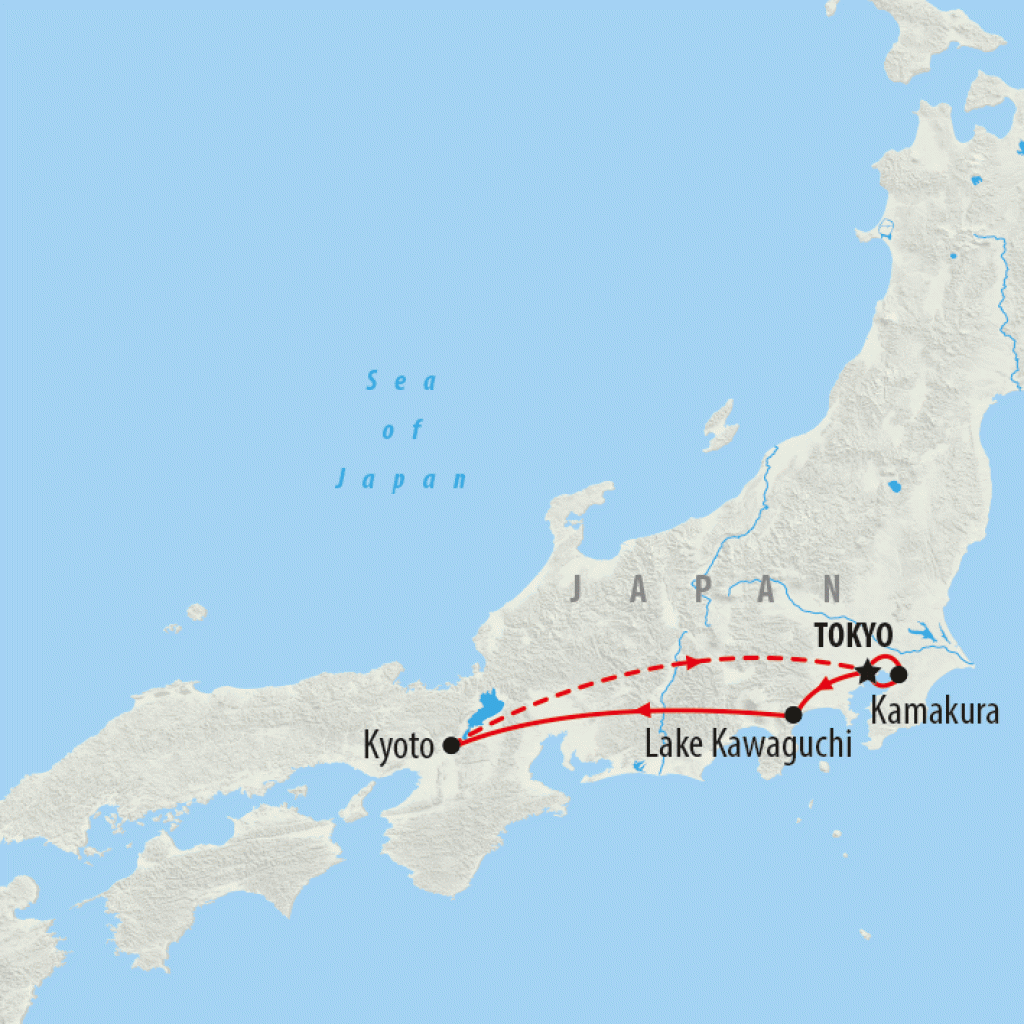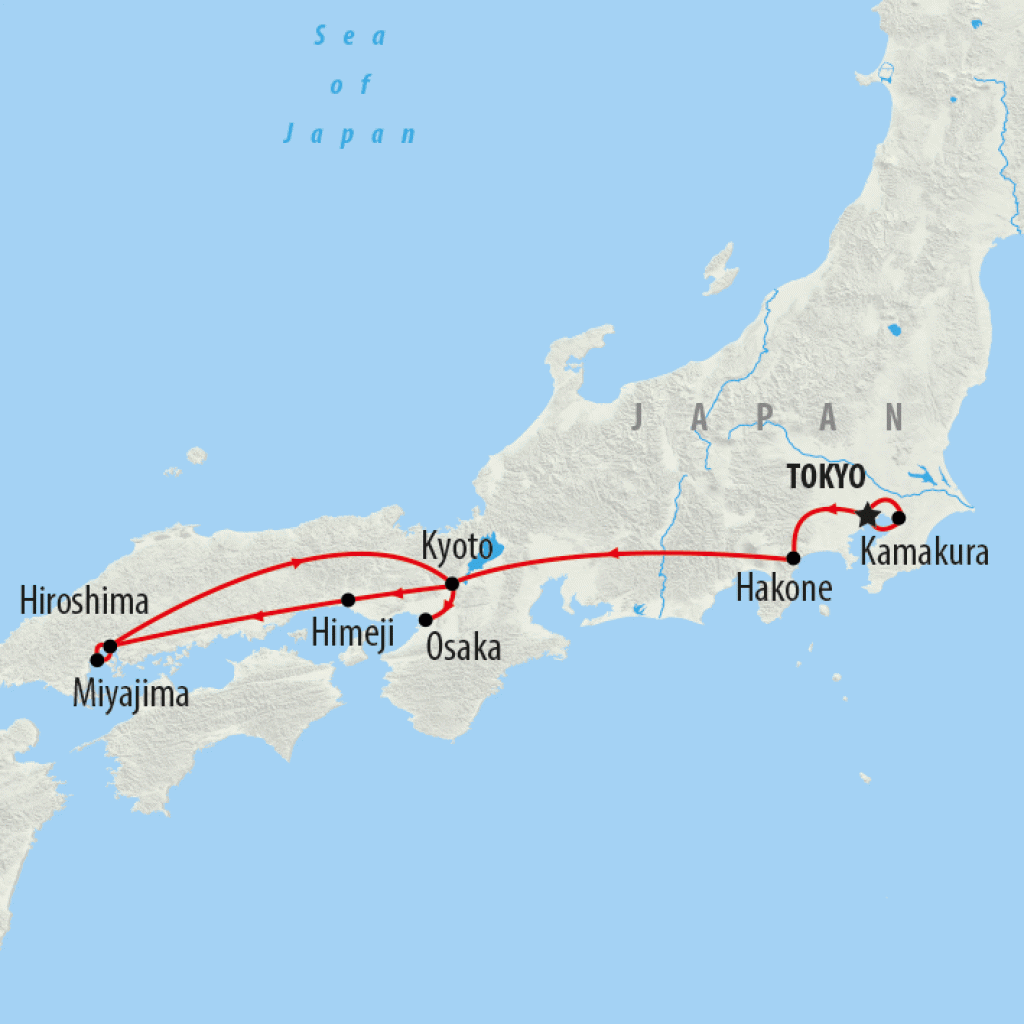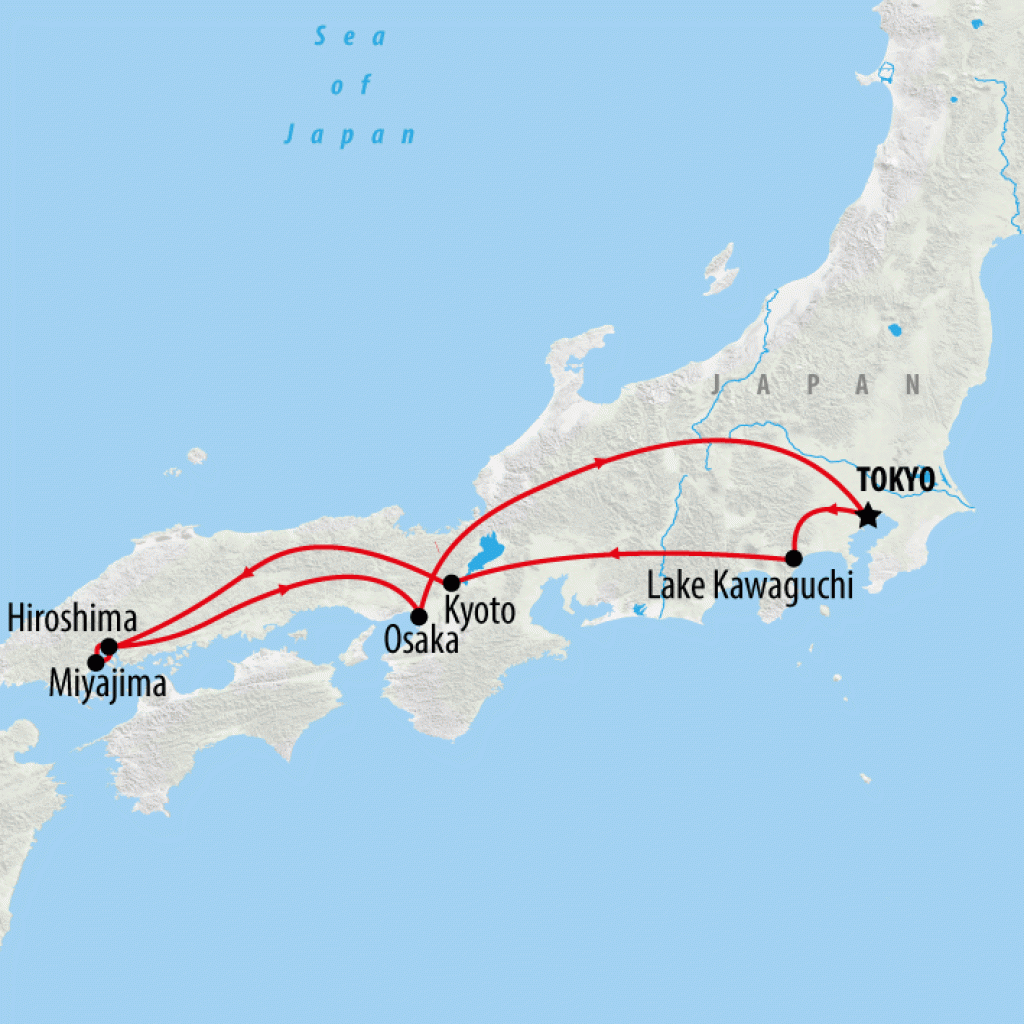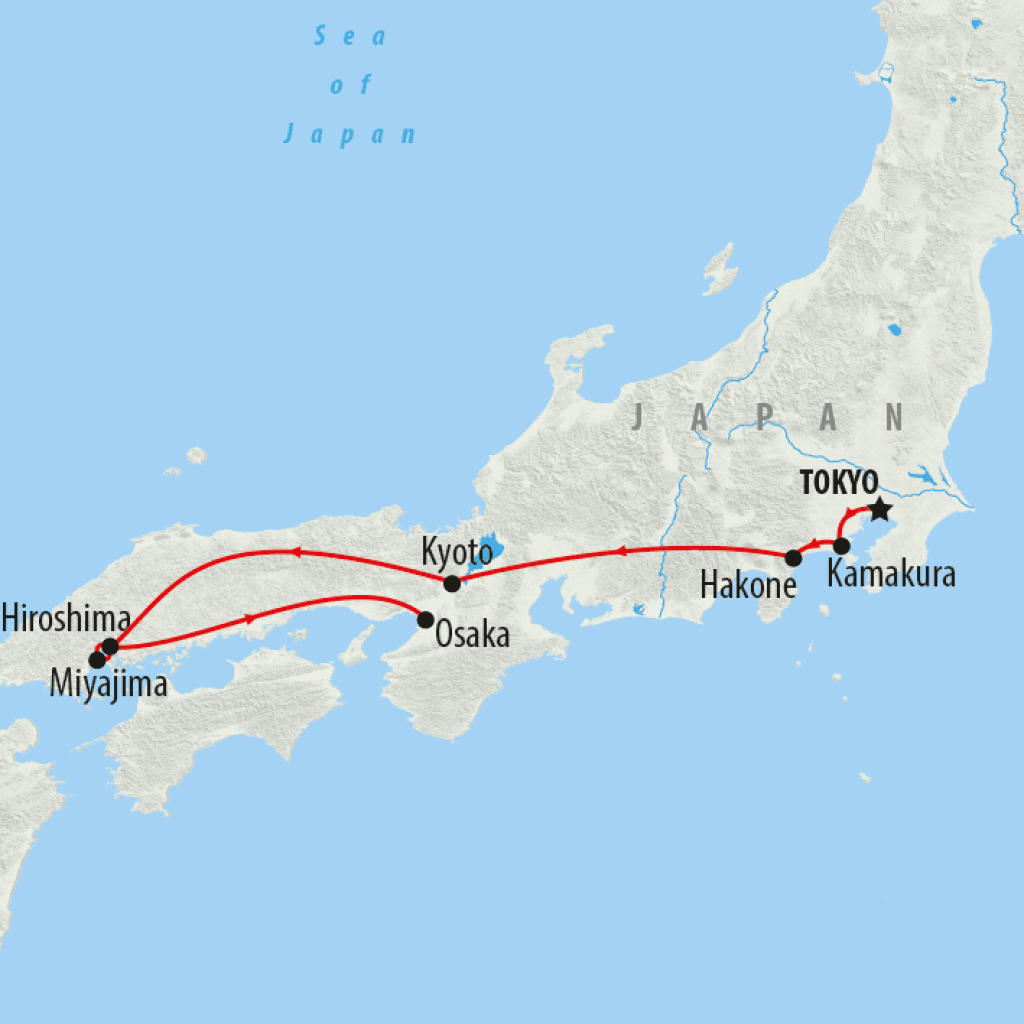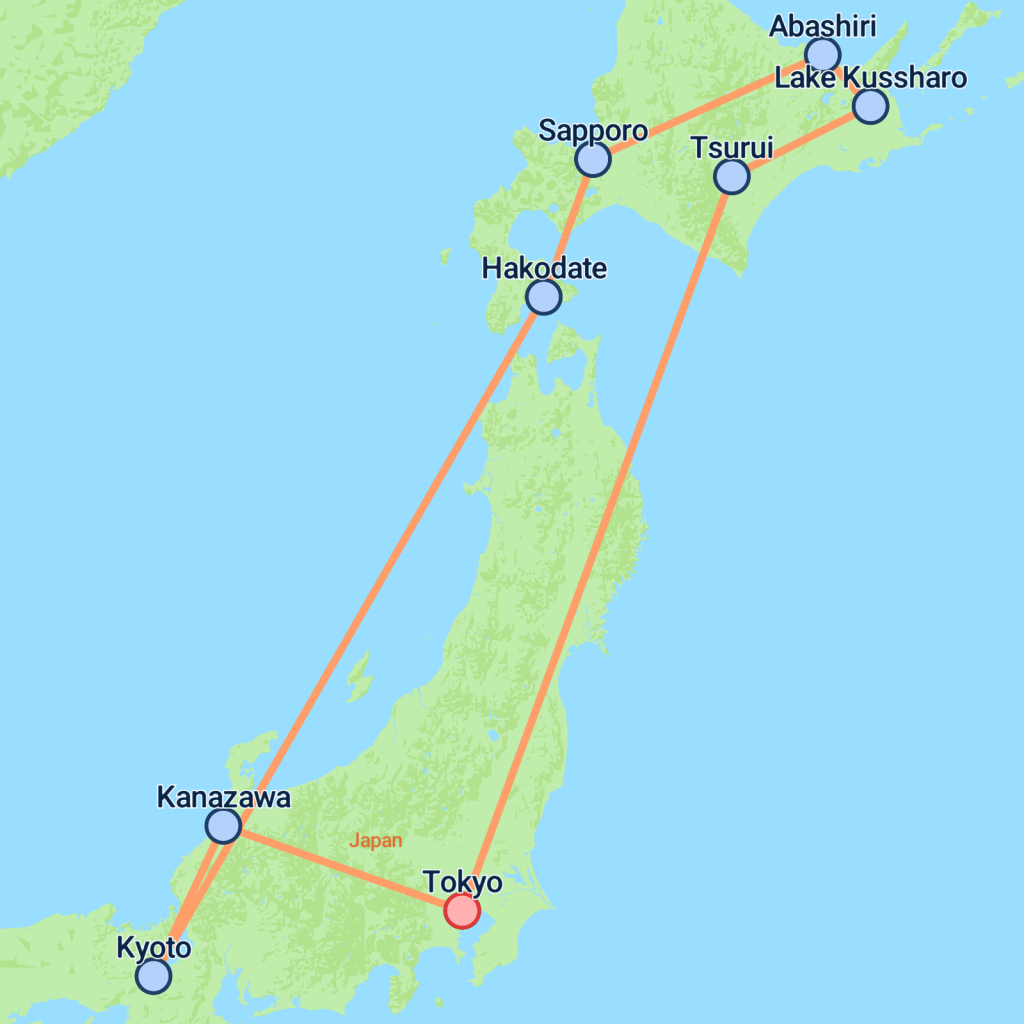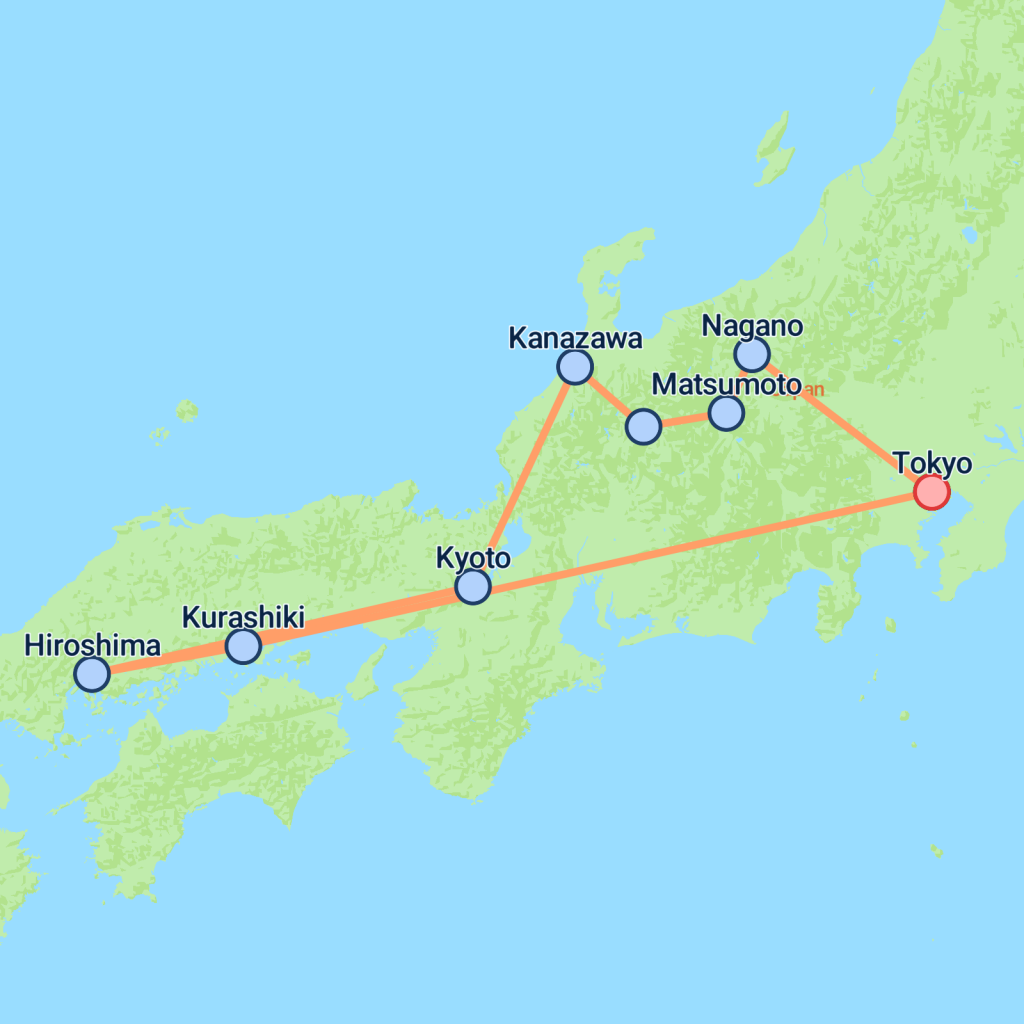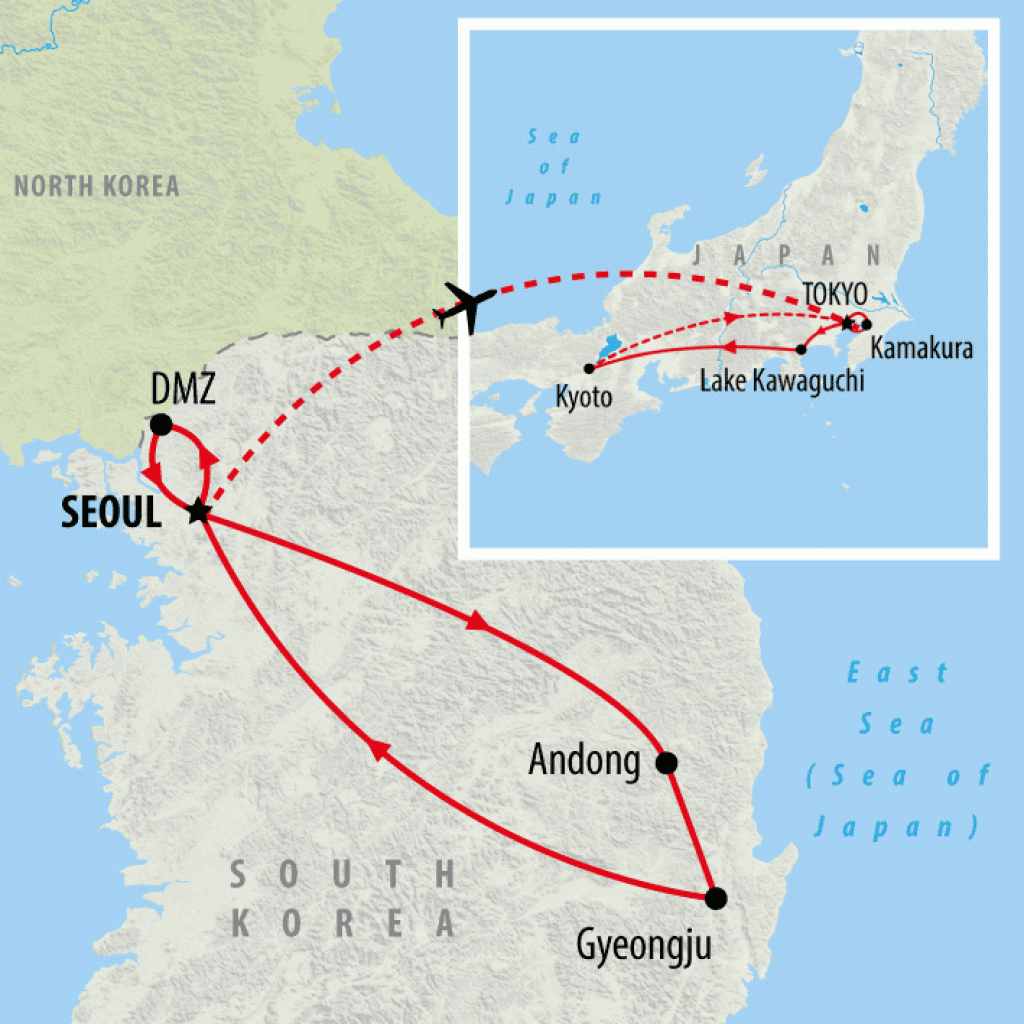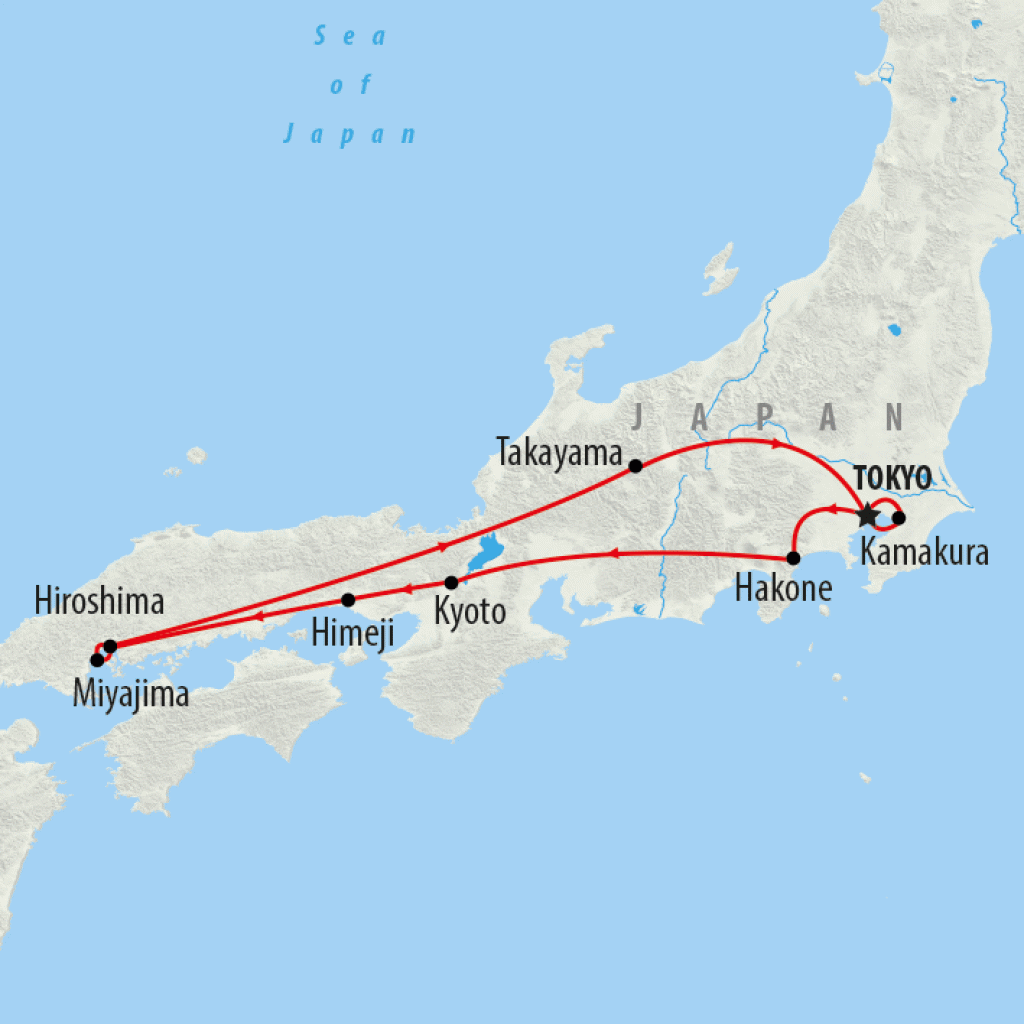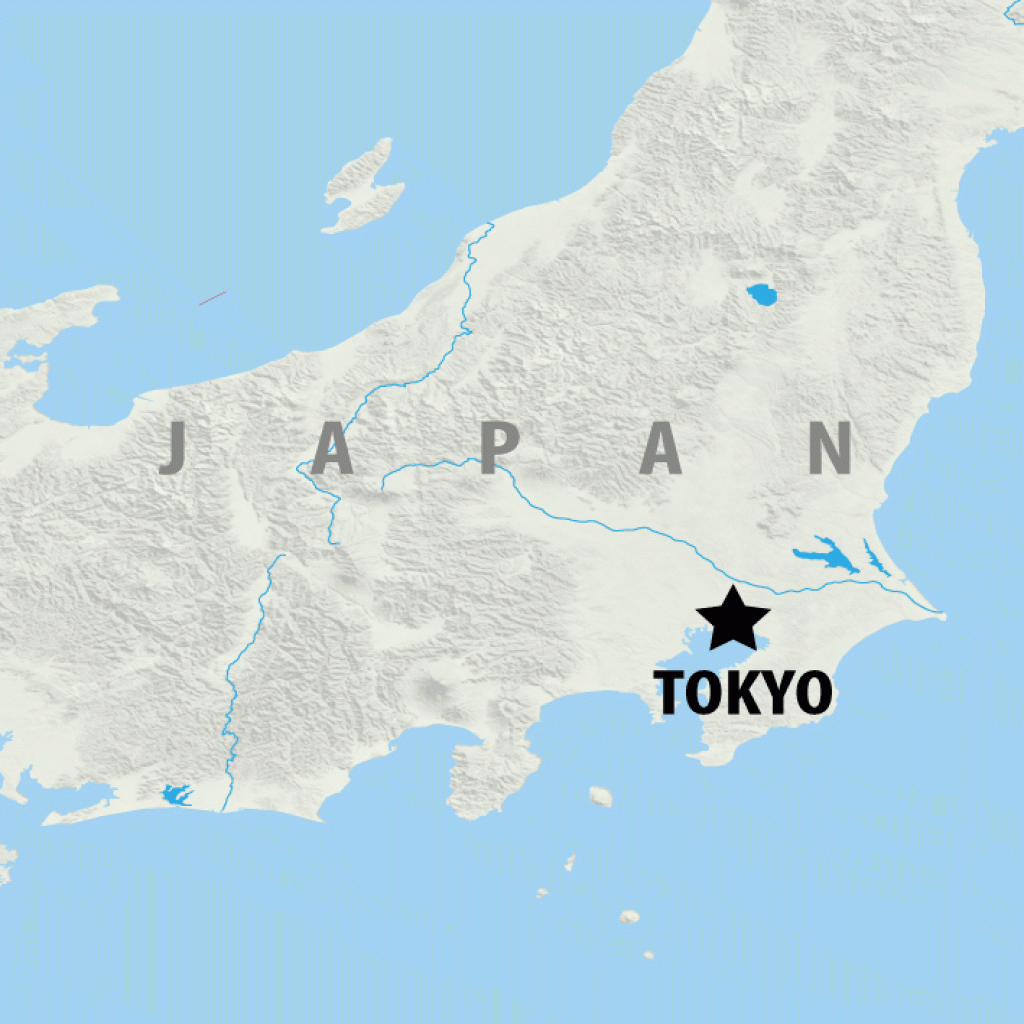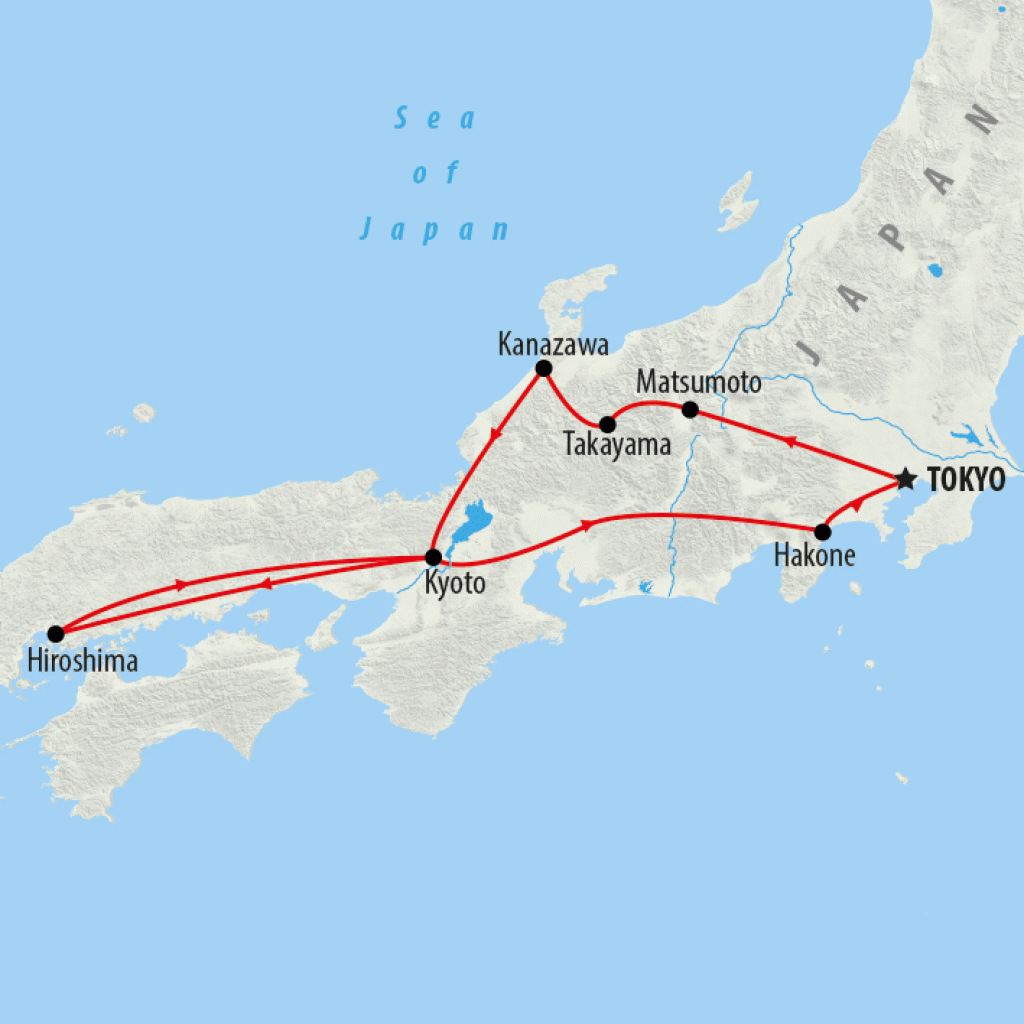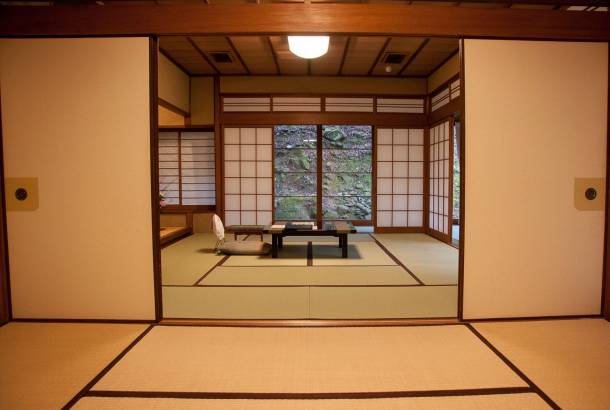
Staying in Ryokan
Originating during the Edo period (1603 - 1868), a ryokan is a traditional Japanese inn that would have welcomed travellers journeying across the country with somewhere to rest their head for the night and enjoy fresh food. Today a ryokan is the ideal place for visitors to sample traditional Japanese hospitality and social etiquette. Guest rooms in a ryokan are typically quite sparse in appearance with tatami floors, futon bedding, and sliding fusuma doors, and sometimes a separate porch or balcony area. On arrival your kimono-wearing host will serve tea in your room from a low table that also serves as your dining table when dinner and breakfast is served. Meals in a ryokan are an experience in themselves with numerous small yet varied dishes of fresh, local produce served in pretty crockery. Some of the best chefs in Japan work in higher-end ryokans and in towns where ryokans outnumber typical hotels, many restaurants close for the evening as guests will prefer to enjoy dinner in their accommodation. A cotton yukata dressing gown and slippers will also be provided for guests to wear around the ryokan and the outdoor baths and hot springs that are often attached to ryokans. The vast majority of ryokans only offer communal baths segregated by gender instead of en suite rooms.
Ryokans can be found across Japan though they tend to be clustered in scenic outdoor areas close to mountains or the sea, often where hot springs are found. Although they do exist in some urban centres, they tend to be more expensive here than hotel accommodation. Hakone is an excellent place to try a ryokan stay with its stunning scenery and abundance of natural hot springs. Another good option is Takayama, a charming town with beautifully preserved ryokans and tea houses set in the Central Alps region of Japan, or the ancient post-town of Tsumago where cars have been banned on the main streets.
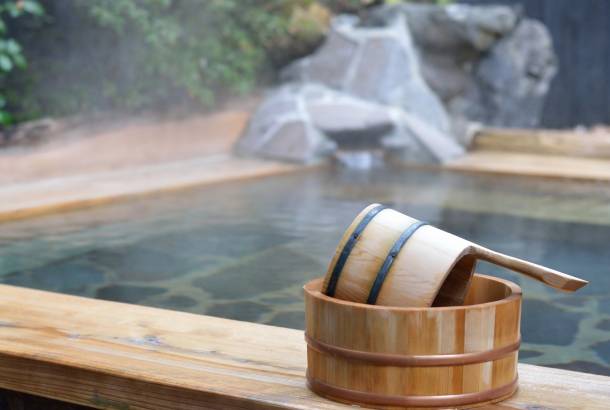
Bathing in Onsen
Onsen is the Japanese word for natural hot springs and the bathing facilities and inns that are built in thermal areas to take advantage of these springs. Thanks to its geographical location, Japan has a volcanic geology with thousands of hot springs throughout the country. Numerous resort towns have developed around onsen, more often than not out in the countryside, driving Japan's tourism with great ryokans and public baths. Traditionally onsen were located outside so that bathers could enjoy uninterrupted views of the surroundings and appreciate the warmth of the waters during the cold winter months with fresh air on their faces. Nowadays a decent number of inns have indoor baths where guests are protected from the elements. Onsen are separated by gender so that men and women bathe independently. Men will usually drape a small towel over their private parts whilst women can wear full size towels though the option for all-out nudity is always available. The Japanese believe in "naked communion" and nobody will bat an eyelid at you for stripping naked, in fact many find the experience liberating. But this may come as a culture shock to some visitors and there is absolutely no pressure to do anything that makes you uncomfortable!
One of Japan's most famous hot springs resorts is the town of Kinosaki Onsen, an ancient town dating back to the 8th century with numerous pockets of hot mineral water and many traditional buildings. With so many onsen and bath houses to choose from in Kinosaki Onsen, many ryokans provide quests with wooden geta sandals and cotton yukata robes to save guests having to dress and undress as they move from one hot spring to another.
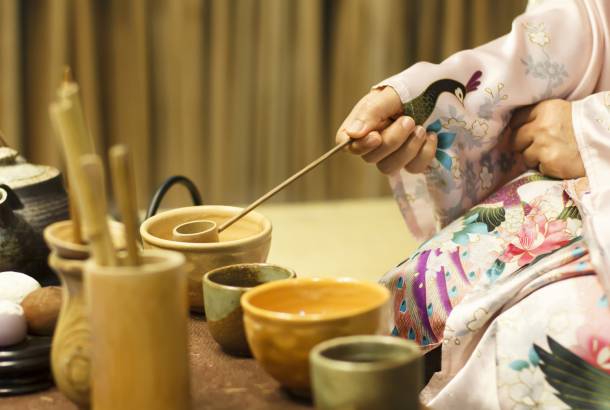
Attending a Tea Ceremony
Known in Japanese as sado ('the way of the tea'), a tea ceremony is a ritualistic way of preparing and drinking tea heavily influenced by Zen Buddhism. Dating back as early as the 12th century, the ceremonial tradition is highly choreographed to channel all attention into the act whilst following four principals: harmony, respect, purity and tranquillity. It's an increasingly popular past-time in Japan with tea ceremonies held in traditional tea houses, cultural community centres and private houses across the country. Preparation styles vary slightly with the seasons, time of day and venue but will follow a general pattern - sweets are presented to guests on their arrival, the tea utensils are brought into the tatami-matted room, the host is seated, the utensils individually cleaned, the serving bowl warmed, and hot water added to the powdered tea, whisked and served to the guests.
Kyoto is where the tea ceremony was first born and is therefore one of the best places to experience one. Three of Japan's main schools are based in Kyoto and the southern district of Uji is an important tea-growing region. Visitors can enjoy a hands-on tea ceremony, hosted by a kimono-wearing teacher who will guide you through the preparation and drinking of the tea in a beautiful tea house. Good options include Okitsu Club, an exquisite Japanese villa where participants can really immerse themselves in the refinement of the ceremony, or Camilla, a traditional house where guests are encouraged to relax and enjoy the pleasure of tea.
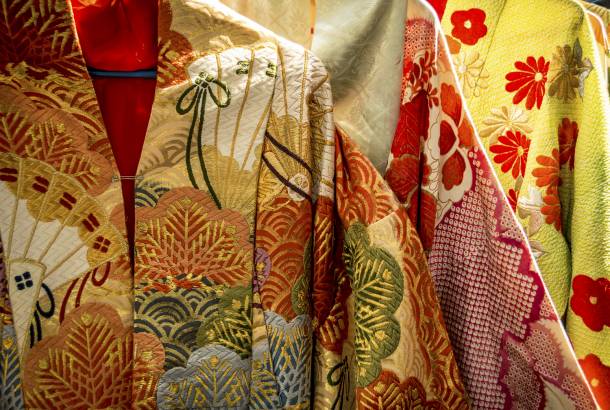
Wearing Kimono
The traditional Japanese garment of kimono is a formal dress worn during important festivals, tea ceremonies, traditional events, weddings and funerals. The full-length robes are worn by both men and women though men's kimono are typically more subdued in colour and furnished from matte fabrics whilst women's kimono are traditionally made from silk and come in a staggering variety of patterns and designs. Alongside their kimono, women will also wear traditional geta, elevated wooden sandals with a fabric thong worn over socks. Kimonos can be extremely formal or casual and the style worn will depend on the wearer's age and status. Made from a single bolt of fabric known as a tan, kimonos are notoriously difficult to put on and a number of establishments have been set up to enable curious visitors, and even local Japanese who rarely have the opportunity to wear such formal clothing, to put on a kimono with the aid of an instructor. Some kimono wearing packages may even include a complete make-over and photo shoot for you to savour the experience.
The majority of kimono rental shops can be found in Kyoto, which makes it the ideal place to try on a kimono. Kanazawa is another good option. Easily considered a work of art in their own right, those particularly interested in the tradition of kimono can visit the Nishijin Textile Centre in Kyoto, which houses an interesting display of kimono with a fashion show held several times a day. Decoration and kimono weaving demonstrations are also held here. In Kanazawa visitors can participate in regular workshops at the Kaga Yuzenkan, a kimono silk painting workshop open to the public.
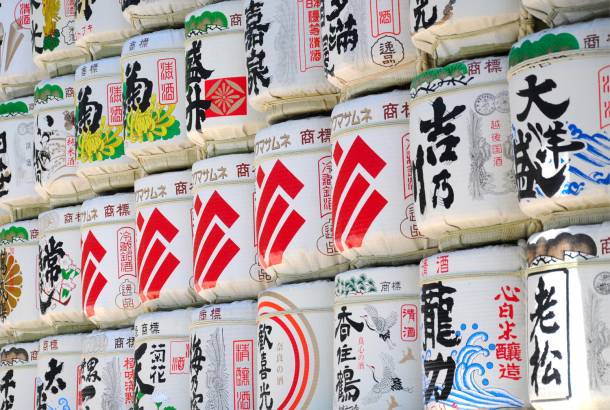
Drinking Sake
Made from fermented rice, sake is Japan's most famous alcoholic export. Commonly referred to as nihonshu in Japan, the drink is often accompanied with a brief ceremony - the beverage is gently warmed in a small earthenware or porcelain bottle called a tokkuri and sipped from a small porcelain cup called a guinomi. Key to a great sake is good quality rice, clean water, koji mold (also used for making miso and soy sauce) and yeast. Served in restaurants and drinking establishments throughout Japan, sake perfectly complements the delicate flavours of Japanese cuisine and is slowly becoming a trendy drink internationally. It's usually enjoyed during appetizers and light meals, and is an important part of celebratory events, such as weddings, when a wooden mallet is used to break the lid of the sake barrel and the sake is served to everyone present.
Walk into any bar or restaurant and you'll no doubt encounter sake but if you want to really understand the art of drinking or making the beverage then whilst in Japan you can join a sake brewery tour. The Fushimi district in Kyoto is one of the most famous sake brewing regions in Japan and a great place to see how sake is produced. Takayama is another good place to enjoy some sake tasting as it's home to a number of small, family-run breweries where traditional methods are still used. Many of these little breweries sell sake and offer samples to entice passersby. Sake breweries can be distinguished by the balls of cedar branches (known as sugidama or sakebayashi) placed above the doorways.
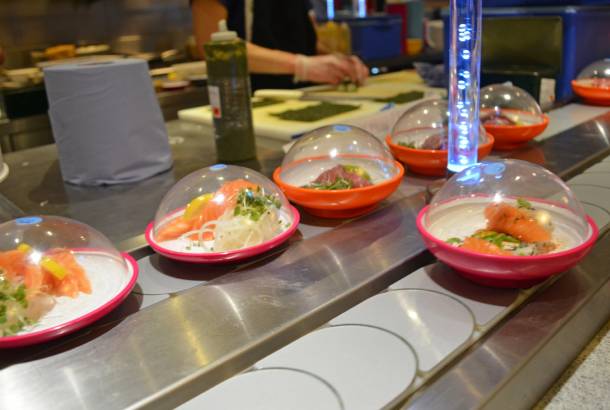
Eating Sushi
You may think you know sushi from the popular Western chains, but until you've tried authentic Japanese sushi, you know nothing! Consisting of vinegar-flavoured cold rice topped or rolled around seafood, raw fish or vegetables and garnished with pickled ginger, wasabi and soy sauce, the very first type of sushi in Japan dates back as early as the 14th century when fish was wrapped in fermenting soured rice. Vinegar was later added into the process and the fermentation step abandoned. By the mid 18th century sushi began to resemble that of contemporary sushi with seafood and rice pressed into individual portions using bamboo mats. Sushi is incredibly varied due to the wide choice of fillings, available toppings and condiments, and the types of preparation, from scattered bowls of rice to seaweed-wrapped rolls. Sushi has become increasingly popular throughout the world with variations designed to appeal to the Western palate and often not actually found in Japan itself. A well-known example is the California roll, rice rolled in nori sheets with crab meat, cucumber and avocado in the centre, usually in a mayonnaise sauce.
The opportunities to sample sushi in Japan are endless and one of the quickest and cheapest ways to enjoy sushi is in kaitenzushi (conveyor belt sushi) restaurants where small plates of sushi dishes travel past diners on a rotating belt. All you have to do is sit down, pick up a dish that takes your fancy and pay for the number of dishes eaten at the end of your meal. For sushi at its freshest head to the Tsukiji Fish Market in Tokyo where hundreds of people clamour to sell their catch to eager business owners and chefs looking to buy produce for their restaurants. Amidst the madness you'll find small, family-owned restaurants serving delicious sushi - a fascinating place to spend the morning.
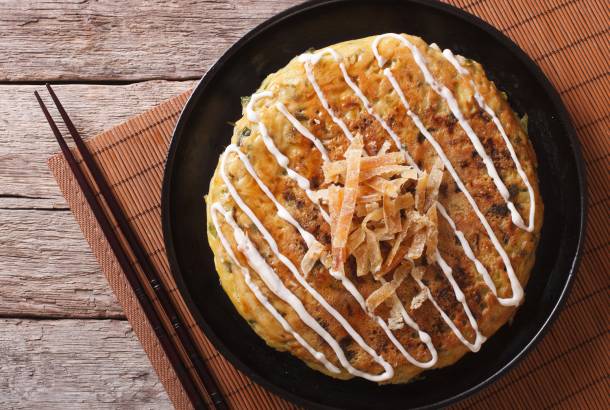
Eating Okonomiyaki
Not as widely known as sushi, okonomiyaki is a mix between a savoury pancake and omelette, the batter of which consists of flour, grated nagaimo (a type of yam), eggs and shredded cabbage, combined with a variety of ingredients from meat to fish and cheese to vegetables. Generally cooked on a hot plate in front of diners, the quick and easy-to-make dish translates as "what you want" (okonomi) "grilled" (yaki) with toppings including a sweet, thick brown sauce, seaweed flakes, dried fish flakes, Japanese mayonnaise and pickled ginger. One variation of the dish is to top it with a layer of fried noodles. Okonomiyaki restaurants are often buzzing as chefs prepare the dishes amid chatter diners enjoying a drink with their meal.
Said to have originated in the Kansai region, the cities of Hiroshima and Osaka are the best places to experience okonomiyaki and a number of restaurants invite diners to cook the dish themselves. Seated at an iron griddle, or teppan as it is known in Japan, diners are provided with the raw ingredients and free to mix the batter as they like it, grill it and then top it with their choice of condiments.
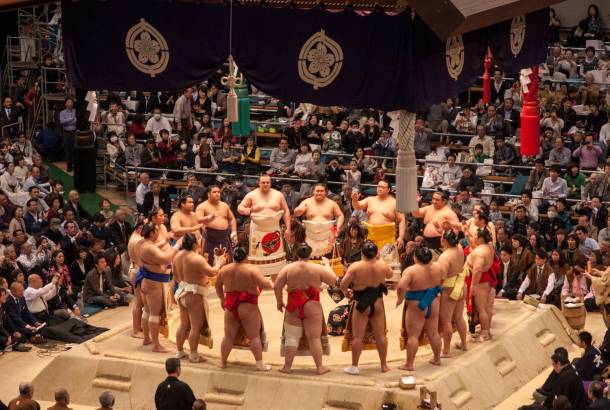
Watching Sumo
The ancient sport of sumo wrestling is Japan's national sport. Two wrestlers compete on an elevated ring, known as a dohyo, made of clay with a layer of sand on top and the goal is quite simply to be the first to force the opponent out of the ring or off their feet. Originally developed as a performance to entertain the Shinto deities, many religious traditions have survived the centuries and today a sumo event will follow a number of rituals, including the symbolic purification of the ring with salt. Each contest is surprisingly quick, lasting only a few seconds, especially since there are no weight restrictions in sumo and smaller contestants may find themselves facing an opponent almost twice their size! All practising wrestlers live in a communal training stable (or heya) where life is highly regimented - everything from what they wear to their wrestling name and what they eat is dictated by strict tradition.
With six official sumo tournaments held throughout the year there is ample opportunity to catch a professional sumo match. Three tournaments are held in Tokyo in January, May and September and one tournament held in Osaka in March, Nagoya in July and Fukuoka in November. Each tournament lasts 15 days with a number of matches held throughout the day. Tickets can be purchased in advance or at the stadiums once in Japan though on the day of a match only a few balcony seats are held back for same-day sale. Outside of official tournaments one of the best ways to appreciate sumo is to visit a sumo training stable in Tokyo, sumo's traditional heartland, where wrestlers train each morning. Visitors must be accompanied by a Japanese-speaking guide familiar with the traditions of sumo and a guided tour will usually last around 2-3 hours. The Sumo Museum inside the Kokugikan Stadium in Tokyo is worth a visit for its collection of images and clothing items from past and present, whilst a number of chanko nabe (hot pot) restaurants in the Ryogoku district are run by retired sumo wrestlers and feature a dohyo ring for photo opportunities, a great option if visiting Japan outside of official tournaments.
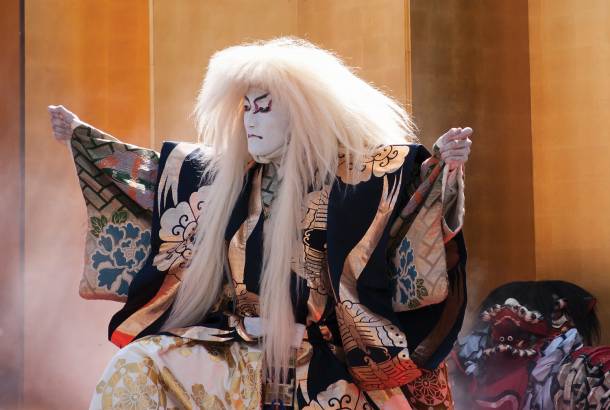
Watching Kabuki
The classical Japanese dance-drama of Kabuki is an eye-popping spectacle of extravagant costumes, eye-catching make-up and hair pieces, and dramatic action set to an epic story line. The highly stylised theatre form dates back to the early 17th century with meaning conveyed in all aspects of the performance from the exaggerated movements of the actors to their made-up appearance. The stage sets are an equally as thrilling part of the performance with trapdoors and revolving platforms, as well as a footbridge leading right through the middle of the audience where characters can make a dramatic entry or exit. Based on historical events and popular love stories, the performances are aided by live music and delivered in an archaic form of spoken Japanese that even the Japanese have difficulty understanding. Thankfully headsets with English translations are provided at a number of kabuki theatres.
A kabuki performance will usually last for hours though it's possible to buy tickets for a short 30-minute scene of one act. The recently renovated Kabuki-za Theatre in Tokyo is one of the best places to experience kabuki with single-act tickets available almost daily and English headsets available. The program changes on a monthly basis with the same plays and dances repeated daily for three to four weeks in afternoon and evening shows.
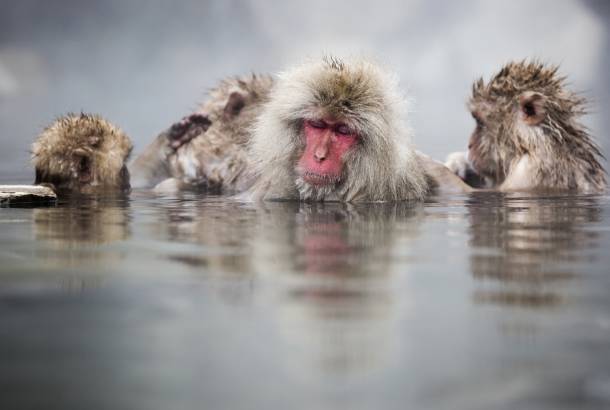
Visiting Snow Monkeys
The Japanese Macaque is Japan's most famous primate, with a distinguishable pink face, expressive eyes and a grey-brown fluffy coat. They are known more commonly as snow monkeys because they live in colder areas of Japan, where snow covers the ground for much of the year. To escape the cold of winter when temperatures often drop well below freezing, the monkeys often head to hot springs to soak in the warm waters, paying little attention to the curious human spectators and their cameras. Whole families, from tiny infants to fully grown adults will frolic in the springs, searching for food, swimming and even throwing snow at one another - it's quite a spectacle and a lovely addition to any winter trip to Japan.
One of the best places to see the bathing snow monkeys is at the hot spring resort town of Yudanaka Onsen that dates back hundreds of years with a number of traditional ryokan though recent development has given the town a somewhat more modern appearance. It's a great place to base yourself for a visit to the Jigokudani Monkey Park, which is inhabited by hundreds of the primates. Surrounded by the forests of the Jigokudani Valley, the man-made pool close to the entrance of the park is a popular hang-out for snow monkeys during the winter months of December to March when snow is at its heaviest.
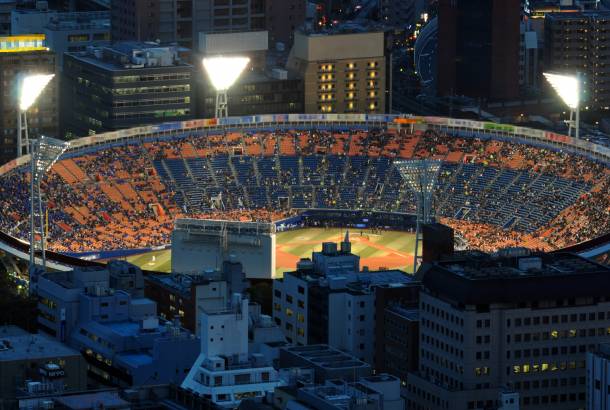
Attending a Baseball Game
Japan's most popular modern sport is baseball, originally introduced by the Americans in 1872 and now loved by the people of Japan with hundreds of thousands attending baseball games throughout the country. In fact, it's the most watched and most played sport in all of Japan, so much so that the Japanese are often surprised to hear that Americans consider it their national sport. The standard of the sport is high wherever you go but regardless if you're a fan of baseball or not, the atmosphere of a game is worth the attendance alone - sporting events are a chance for the Japanese to have fun and let their hair down so expect lots of cheering aided by hand clappers and giant foam hands. Out in the bleachers fans will spend most of the match on their feet as their team bats, waving banners, shouting encouragement and making friends with their fellow supporters over a beer or bottle of sake.
A great place to watch a game of baseball is at the Toyo Carp's Mazda Stadium in Hiroshima, which is perfectly located close to a train station in the heart of the city. The loyal fans of Toyo Carp are always keen to show their support for their team and create an exciting atmosphere in which to enjoy a game. Another good option is the Meiji Jingu Stadium in Tokyo where the Yakult Swallows play and beer vendors walk through the bleachers with small beer kegs on their backs ready to dispense fresh draft to thirsty fans. The baseball season in Japan starts in early spring, March/April, and ends in October.




































